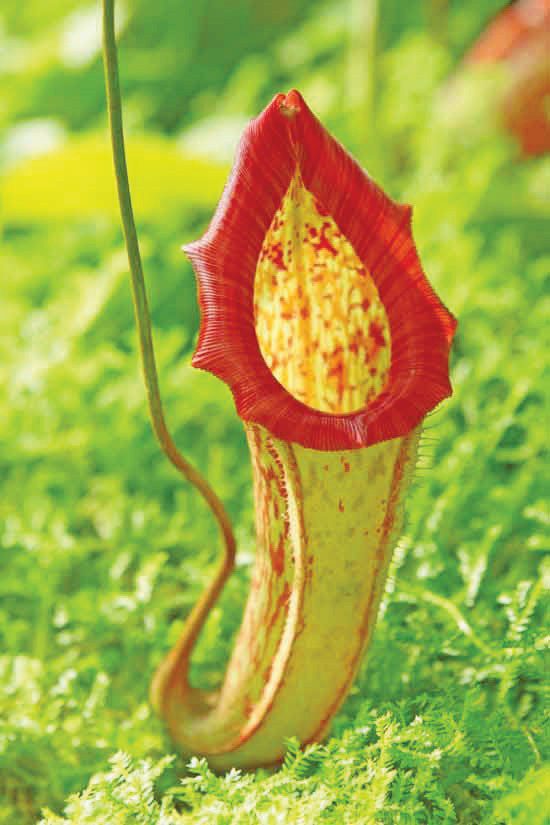Pheromones
Understanding pheromones
by AbdesSalaam Attar
Part 1
Table of content
What are pheromones?
Hormones are molecules produced by the endocrine system that transport signals inside an organism, like messengers that command the biological functions of the body.
From the Greek pherein, to transport and hormon to stimulate, pheromones are molecules produced by various organs of the body and are used by animals to communicate with each other. For this purpose, they are expelled outside of the body so as to be smelled by other individuals.
Not always pheromones of animals are directed to individuals of the same species. Actually, the function of these molecules is not exclusively sexual and there are numerous examples of pheromones used by various species, for example from insects and mammals.
The production of pheromones has a very low energetic cost and is the first system used by living organisms in order to communicate, like the chemical sense that has been the first one being used to perceive the external world. The purpose of the production of pheromones is to let a message reach long distances when visual or auditive signals are not sufficient or in order to reinforce them.
The interest in pheromones for the researchers does not reside so much in their chemical composition how much in the behavioral answer that they trigger.
We can identify three types of pheromones according to their function and two ways of action with which they provoke an answer.
Three are the functions that the pheromones produced can have towards their addressees, even if sometimes a pheromone may have more than one effect. First is the function of identification, second of alarm, and third is the sexual one.
Three types of pheromones
-
The pheromones “olfactory signatures” are the smell that allows the mother buffalo to recognize its baby among hundreds of thousands, but also the human mother to recognize after only three hours the smell of her child on a shirt among ten others worn by other babies. In the same way ants, bees or termites have “olfactory signatures” that reveal their belonging to a specific family on the same territory. Territorial animals like felines, dogs or beavers disperse these pheromones to assert possession of that territory.
-
The alarm pheromones are produced and diffused in the air often accompanied by visual and acoustic signals in case of wound or danger. These pheromones have a very simple structure as they don’t carry an identification function. Actually, various species produce the same identical alarm pheromone and often various species on the same territory have learned to recognize the olfactory marks of other animals in order to increase their possibility of survival.
-
the sexual pheromones have a determining function in the reproduction process, often allowing to synchronize fecundation with ovulation. It is so for many sea organisms, crustaceans, and fishes but also for mammals. At the moment of ovulation, the female produces a pheromone that triggers in the male the production of sperm or sexual behavior. For many mammals, if not for all, horses, ovines, dogs and many others, the olfactory signal of the female is what triggers the passion of the male.
Two types of answers
There are two ways in which the pheromones act on their addressee: direct and indirect. In the case of animals that possess a limbic system, a pheromone often acts in both ways. This is due to the design of the olfactory system that interacts with the limbic system and above all due to the existence of olfactory memories able to activate the endocrine system in order to reproduce the emotions that have been associated in the past with smells. The field of olfactory memories is a mysterious one, an unexplored ocean in which the researcher cannot avail himself of modern investigative technologies but only of his own intelligence and intuition.
1.) The direct answers: the behavioral answer to the olfactory perception of the pheromones is illustrated by the example of some male mammals, for which the sight of the female genitals provokes sexual excitement. This physical answer is ordered by the central nervous system. In the same way, fleeing is the behavioural answer to the alarm pheromone for antelopes. This behavior is ordered by the central nervous system when the pheromones have been perceived by the olfactory neurons. Another example is the particular position that a swine female adopts automatically in order to facilitate penetration when she smells the pheromone 3alfa androstenone from the saliva of the male over her. Actually there are the pheromones present in our saliva that can make us lose our mind with a kiss.
2.) The indirect answer is a very insidious and powerful one because it consists in activating the endocrine system of the recipient through the olfactory stimulus. The olfaction is a part of the primitive “reptilian” brain that sneaks out from a hole in the skull in search of chemical information. It is not composed of nerves that pick up and transmit the stimuli like other perception organs but of constantly renewed neurons. The primitive brain, that is, the limbic system, is the center of unconscious physical functions (respiration, heartbeat, etc) and controls not only all biological functions of the body through hormone production (renins for arterial pressure, etc), but also all emotions be they most primitive (fear, hunger, sexual desire) or most evolved (love, feelings, ecstasy). This capability (or power) to provoke an effect on the inner biological regulation of another individual used by all species in the reproduction process in order to increase their possibility of survival. The example of the red fish Carassius Auratus shows how pheromones coordinate such a process. In the evening while the female matures the eggs, its high level of steroids overflows in the water and the olfaction of the male perceives the pheromone. Its brain is then stimulated to produce hormones that start the sperm production. In the morning, during ovulation, the eggs in the reproductive tract initiate in the female the production of prostaglandin that determines her own sexual behaviour. Metabolism of prostaglandin overflows in the water and stimulate the sexual behavior of the male.
It is now understood that in the animal kingdom, more interactions are carried out by pheromones than by any other type of signal. The evolution of these signals in a very short period of time is very probable because of the particular design of the olfaction (activation of the endocrine system and existence of the olfactory memories) and because odour cues are tremendously important in increasing reproductive and survival success.
I personally assert that olfactory memories are so important in the learning process for survival that it is highly probable that they are genetically transmitted from one generation to the other. In this way, all odours whose recognition may increase reproduction success or survival are immediately integrated into the behaviour of organisms.
There is in reality much less difference between pheromones from invertebrates and vertebrates than could be thought. Also, the behaviours that they provoke in various species are very similar.
The power of smells and particularly of pheromones to provoke primordial emotions and to provoke social behaviours is a power coveted by the adepts of marketing and communication. They would happily compel consumers to buy a product without their being aware of that. We point out that no laws regulate the use of these molecules in marketing and advertisement. It has been observed that synthetic pheromones used in perfumery fragrances (synthetic musks) not only are toxic (see Greenpeace report) but can also provoke confusion about one’s own sexual identity. Continues…
REPORT ON PHEROMONES:
-
What are pheromones? (you are here)
-
State of the research on pheromones
-
Sexual pheromones
-
Human pheromones
















